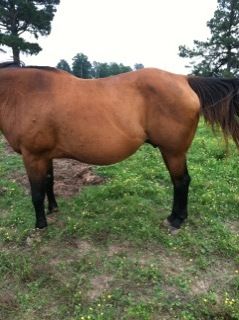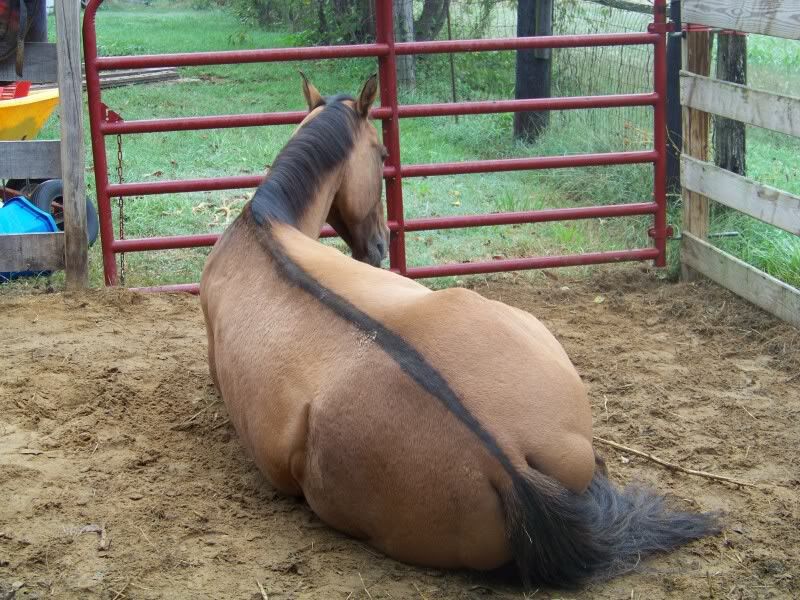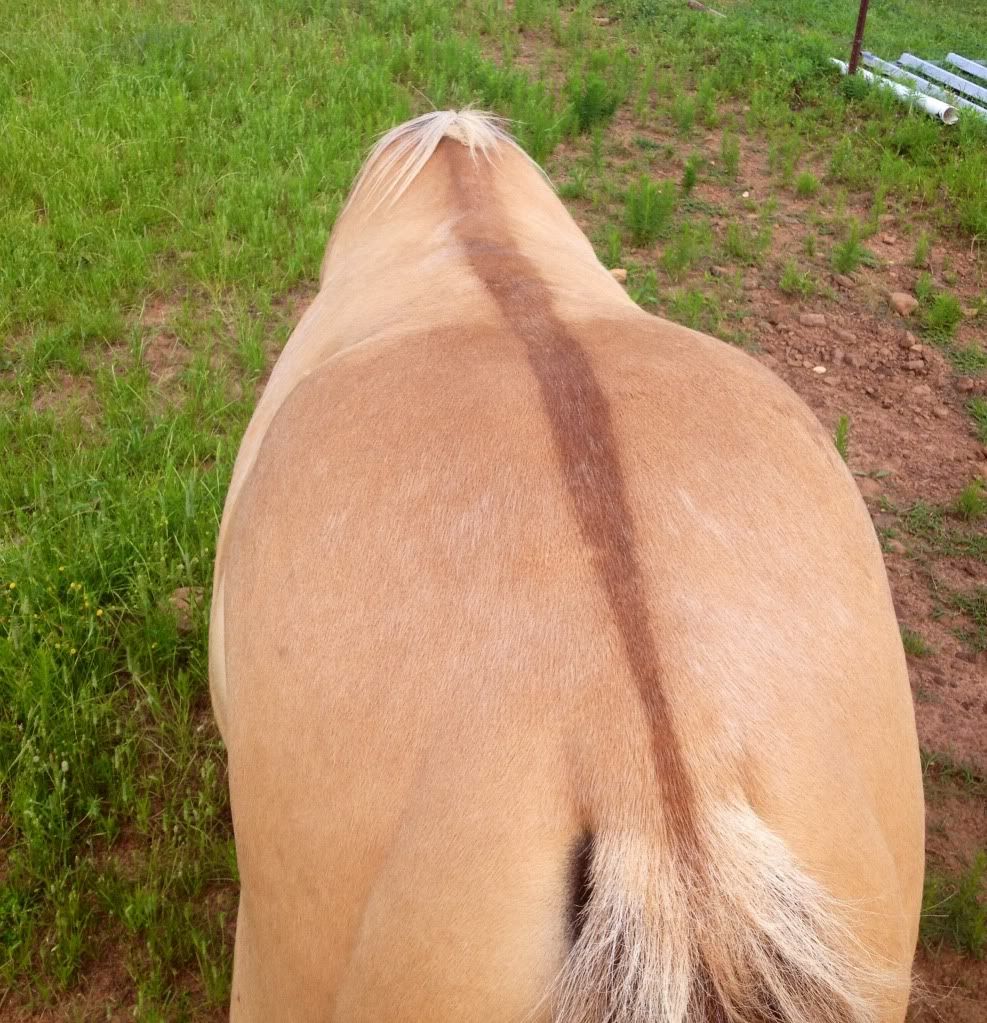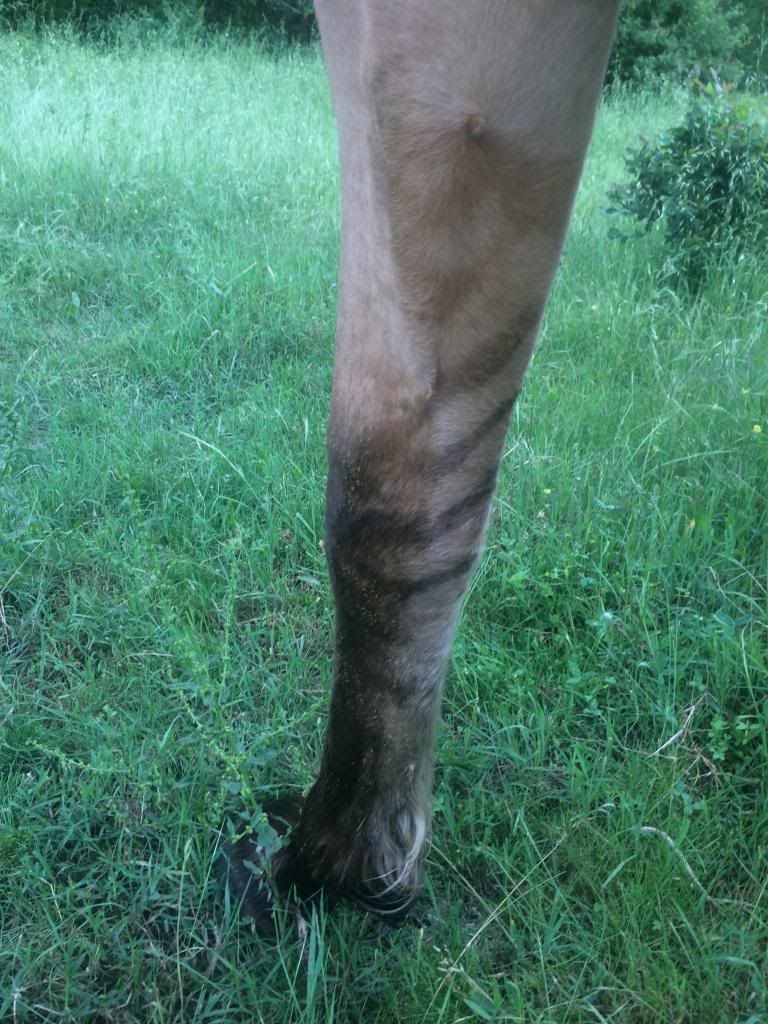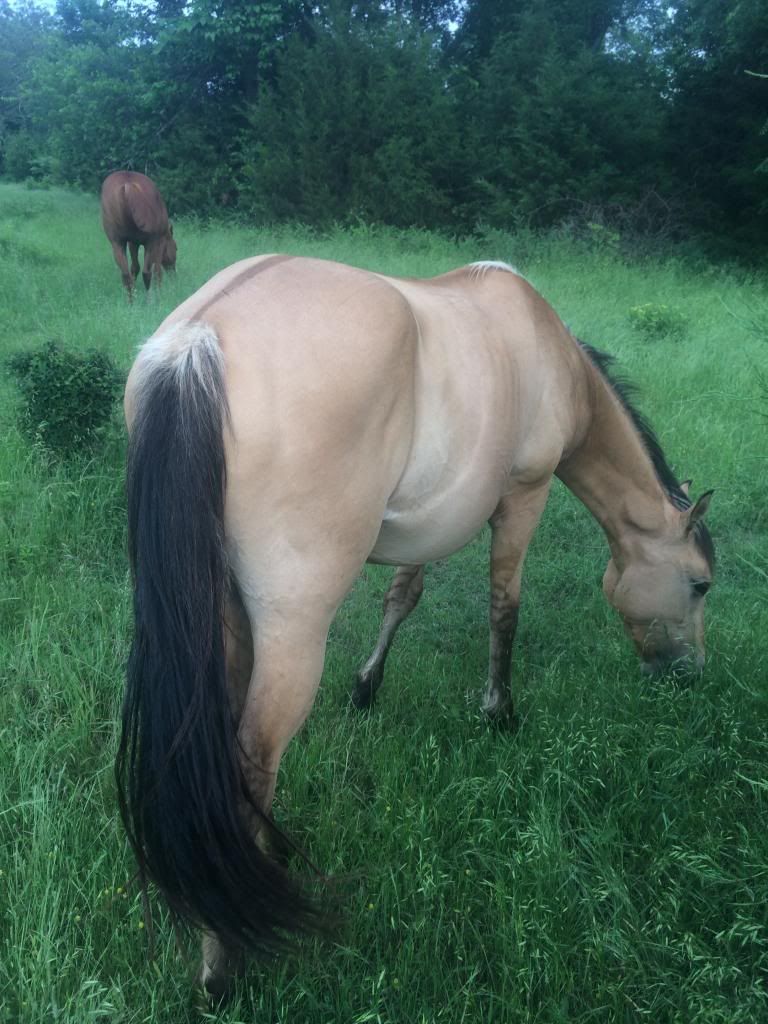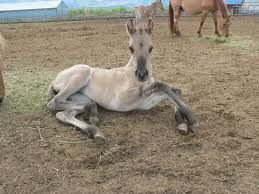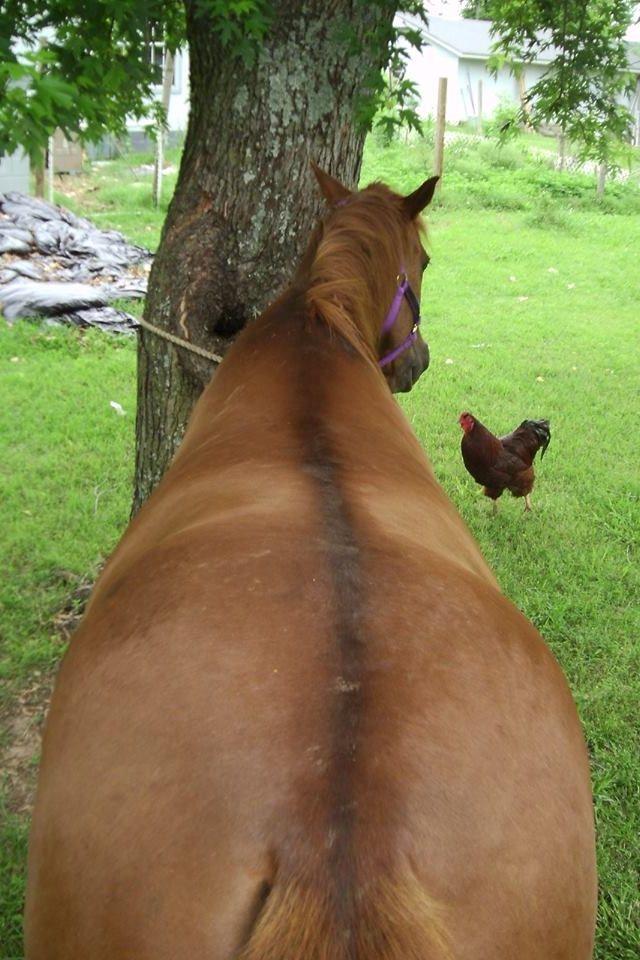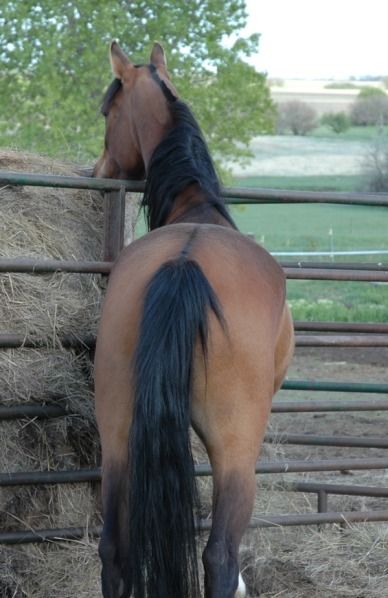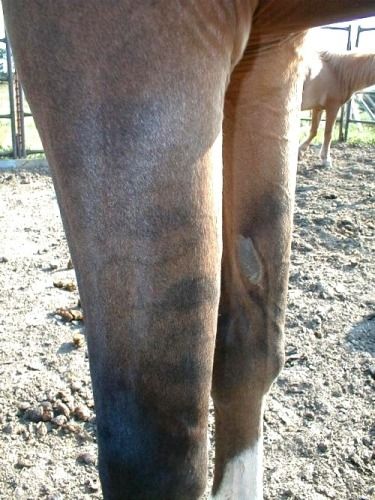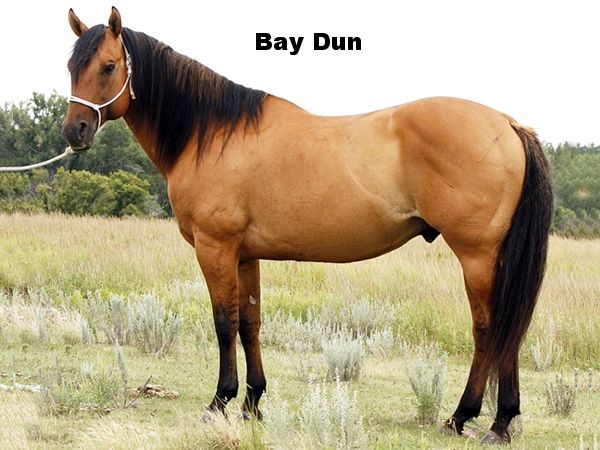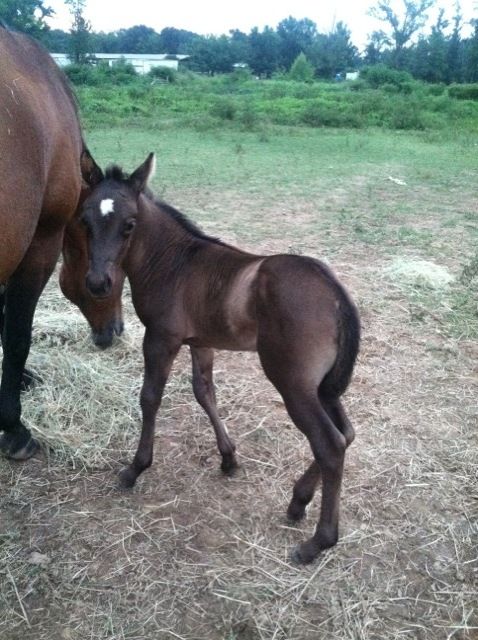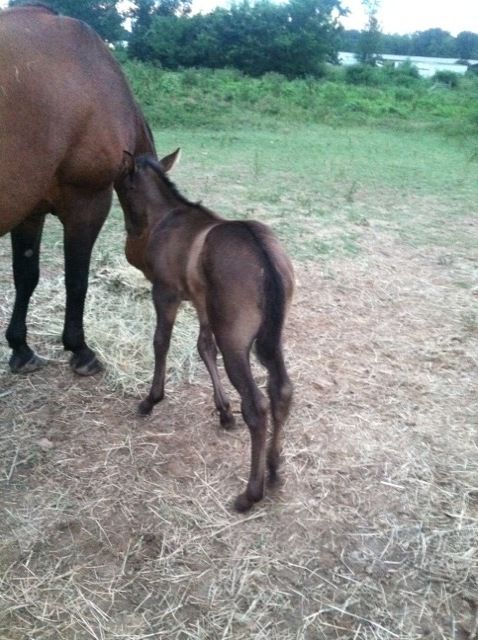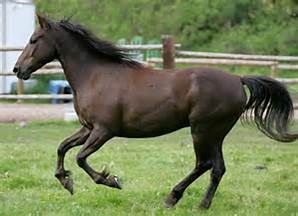My mare is a bay qh, but has a dorsal stripe and all of the dun markings besides zebra on the legs. I do not know her parents colors but I know zip's chocolate chIp is strong in her bloodlines. Would she be considered a dun or a bay? she had a foal 2 weeks ago, and she has the stripe and zebra coloring on her legs, but is smokey black.also, do you think this foal turn out to be grullo?
Here is the baby and part of mom
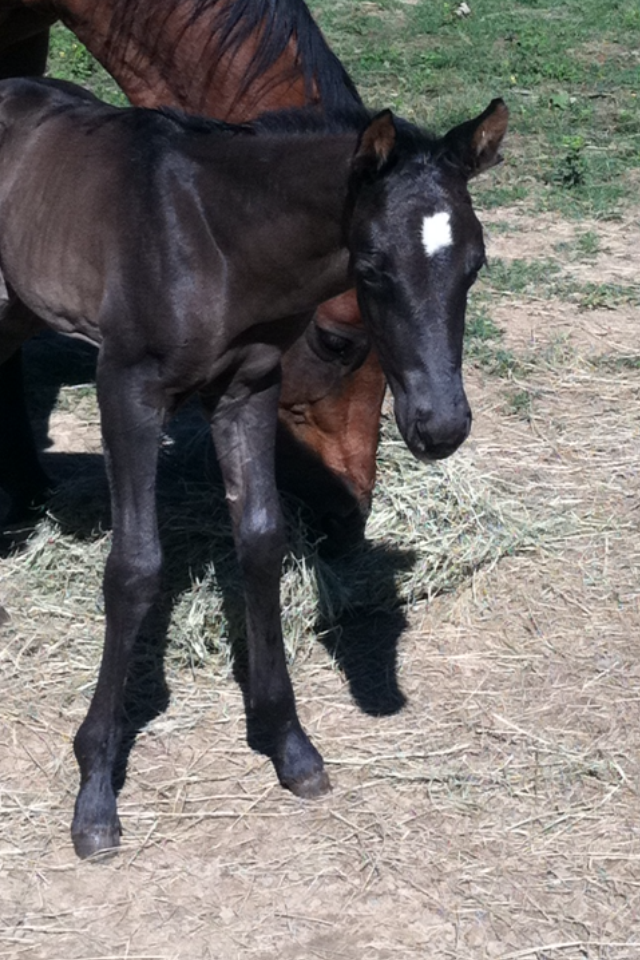
Here is the baby and part of mom



